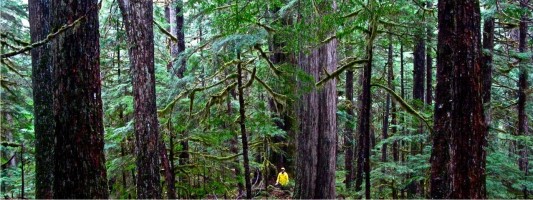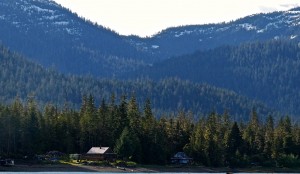by Gabe Scott
Where is the Tea Party when we need them?
I’ve been spending a lot of time lately with two thick Environmental Impact Statements — for the Tonka Timber Sale, and the Big Thorne Timber Sale — out of Alaska’s Tongass National Forest. These fellas are a blast from the past, a nostalgic but savage reminder of why our work continues to be so necessary on Cascadia’s northern forest.
The Tonka and Big Thorne timber sales target thousands of acres of old-growth for clearcutting. Trying to stay clear of controversial roadless areas, they’re logging mostly “leave” areas between past clearcuts, on places like Prince of Wales Island and Lindenberg Peninsula. The result would be huge, continuous clearcuts. Sacrifice areas, really.

One big problem is these huge swaths of land will be worthless to deer during hard winters. In good weather, even a clearcut can be good habitat for a deer. But when deep snow comes deer seek refuge in the shelter of big trees, and rely on the lichens beneath them to avoid starvation.
A related problem comes when clearcuts grow back into densely stocked second-growth. This shades out undergrowth, killing the herbs and shrubs that deer eat. A second-growth forest in the “stem exclusion phase” is worthless to deer from about 30 years after logging out. The condition lasts about a century, nobody is really sure.
Loss of deer winter habitat has spiraling negative effects to wolves and humans who eat them. If this sacrifice areas strategy goes forward, the ecosystem won’t just be damaged — it will be destroyed, thrown fundamentally out of whack. Places like Prince of Wales Island and Lindenberg Peninsula will no longer be able to support deer, human hunters and wolves. One of the three will have to give.
It’s pretty clear how this story plays out. The last few winters have been hard, and the places that have been heavily logged have seen huge declines of deer. On Lindenberg Peninsula, where the Tonka sale is proposed, the Alaska Board of Game voted this month to limit the deer season and bag limit. Worse, they are considering “predator control” plans to kill off 80% the wolves in the area, in a desperate effort to leave enough deer to hunt.

These are the consequences of logging, so why are we still doing this? The thing is, the Forest Service sees it as their job to prop up and grow a timber industry in Southeast Alaska. These massive logging projects are based on the idea that if enough forest is sold cheaply enough, new mills will rise from the ashes.
The facts aren’t there to support the scheme. The truth is, not being able to find enough trees was never the reason behind the old-growth industry’s decline. The reasons are obvious: the price you can sell trees for went way down, and the cost of logging went way up. There’s only one mid-size mill left in business (just barely).
The fact is this: it is not profitable to log and mill Tongass old-growth on any large scale.
There are all sorts of gimmicks used to disguise the fundamentally unsound economics. The Forest Service builds, maintains and repairs a vast network of logging roads with taxpayer money. They try to hide the millions of dollars it costs to design, lay out, and do environmental analysis for timber sales.
The strategy doesn’t even obey its own logic. The Forest Service routinely issues exemptions allowing loggers to bypass the local mill and export logs overseas. If the point is to save the local mills, then why are these sales geared to export markets?
What is going on here is exactly the kind of “crony capitalism” that Sarah Palin rails against. We have a few dozen people in the logging industry, a Forest Supervisor, and local politicians co-enabling each other by peddling a tired old narrative. There’s a veneer of rugged individualism, but really these are government-made jobs. Taxpayers are paying over a quarter-million dollars for each logging job being created.
The “jobs versus environment” debate has become so entrenched that most politicians don’t know how to think any other way. Eventually the facts will catch up, and Tea Party folks will realize Tongass logging for the wasteful government program that it is.
Until then, we’ll have to keep fighting these big timber sales like it’s 1999.



The biggest threat to the Tongass is S 340, the Sealaska Bill. All the details are here. http://tongasslowdown.org/TL/action.html
The Sealaska Lands Bill is worth 5 Billion. It is a land grab. Yet Most of the National Environmental Groups are using it as a chip to get their bills passed.
Wyden needs S 340 to pass in order to get the Oregon Railroad Land Bill passed.